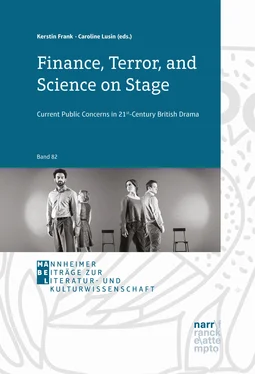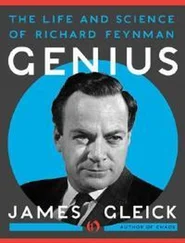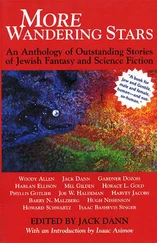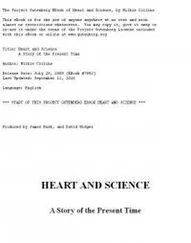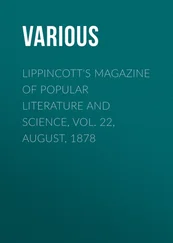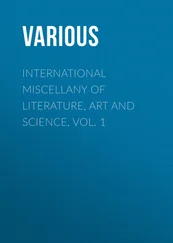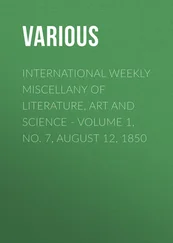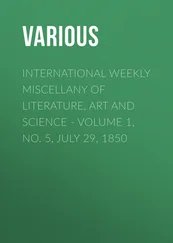Finance, Terror, and Science on Stage
Здесь есть возможность читать онлайн «Finance, Terror, and Science on Stage» — ознакомительный отрывок электронной книги совершенно бесплатно, а после прочтения отрывка купить полную версию. В некоторых случаях можно слушать аудио, скачать через торрент в формате fb2 и присутствует краткое содержание. Жанр: unrecognised, на английском языке. Описание произведения, (предисловие) а так же отзывы посетителей доступны на портале библиотеки ЛибКат.
- Название:Finance, Terror, and Science on Stage
- Автор:
- Жанр:
- Год:неизвестен
- ISBN:нет данных
- Рейтинг книги:5 / 5. Голосов: 1
-
Избранное:Добавить в избранное
- Отзывы:
-
Ваша оценка:
- 100
- 1
- 2
- 3
- 4
- 5
Finance, Terror, and Science on Stage: краткое содержание, описание и аннотация
Предлагаем к чтению аннотацию, описание, краткое содержание или предисловие (зависит от того, что написал сам автор книги «Finance, Terror, and Science on Stage»). Если вы не нашли необходимую информацию о книге — напишите в комментариях, мы постараемся отыскать её.
Finance, Terror, and Science on Stage — читать онлайн ознакомительный отрывок
Ниже представлен текст книги, разбитый по страницам. Система сохранения места последней прочитанной страницы, позволяет с удобством читать онлайн бесплатно книгу «Finance, Terror, and Science on Stage», без необходимости каждый раз заново искать на чём Вы остановились. Поставьте закладку, и сможете в любой момент перейти на страницу, на которой закончили чтение.
Интервал:
Закладка:
Questions of political power and ideology had frequently been addressed on the stage from the mid-1950s (with Look Back in Anger of 1956 often cited as a starting point) to the early 1990s – as summed up in Michael Patterson’s definition of traditional British political theatre: “a kind of theatre that not only depicts social interaction and political events but implies the possibility of radical change on socialist lines” (3f.). The exact format of the plays varied, but the basic approach remained very constant from agitprop and social realism to the state-of-the-nation plays of the 1980s. At the beginning of the 1990s, however, this established form seemed to disappear rather suddenly (cf. Middeke/Schnierer/Sierz xiii-xiv; Kritzer 24; Saunders 3, 5f.), with well-known ‘political’ writers turning to foreign affairs or only addressing political issues obliquely as mirrored in private relationships. This also holds true for the most obvious new theatrical form of the decade, In-Yer-Face Theatre, which employed very graphic shock tactics from the mid-1990s onwards, but approached the traditional ‘political’ questions as indirectly as the more subtle psychologically oriented drama for instance of David Hare (cf. also Middeke/Schnierer/Sierz xiii). A possible explanation for this turn away from the political can indeed be found in the rhetorical developments outlined above, which made it more and more difficult for playwrights to break through the pervasive discursive veil to address fundamental questions of power imbalances and ideology (cf. Tönnies, “New Lingo”, 174, 181–3; Tönnies, “Immobility”). At most, this worked for concrete issues and case studies, which may explain the rise and lasting popularity of documentary and verbatim theatre from the mid-1990s onwards (cf.e.g. Kritzer 24; Haydon 45; Rebellato 13). Keeping close to actual events, even down to the level of the words used by the participants, apparently offered playwrights a point of orientation in an increasingly blurred and linguistically uniform political landscape.
In the first years of the 21 stcentury, this development was more widely recognised and often perceived as problematic. Thus, The Guardian for instance launched a series in spring 2003 in which the role of political theatre was scrutinised by a number of leading dramatists (cf. especially Edgar on the “meagre” theatrical response to New Labour in the 1990s). At about that time, however, there was also a sense that maybe things might be changing for the better again, with Billington’s December survey of that year stressing that the theatre finally seemed to be paying attention to “the big issues” again. Playwrights indeed managed to return to the traditional interest in unequal power relations in the 2000s (cf. also Angelaki 60; Adiseshiah 104–5; Middeke/Schnierer/Sierz xiv), but it cannot be stressed enough that many of the new works left out a salient element from Patterson’s above-quoted definition: Instead of ‘implying the possibility of radical change’ in a specified direction, they approached their subject matter in a rather abstract way, refusing to establish a direct, unequivocal relationship with the spectators and to offer any clear-cut solutions. This tendency was particularly pronounced in a form which may be labelled ‘absurdist dystopia’ due to its combination of certain established genre characteristics, and of which Caryl Churchill’s Far Away (2000) is probably the most frequently discussed example (cf. Tönnies, “Immobility”).1 This form seemed to constitute one of the few approaches by which the theatre could bypass the smokescreen of political rhetoric in the early 2000s and return to fundamental issues of power and ideology that extended beyond concrete cases. The plays were usually characterised by pronounced minimalism as far as their length and cast was concerned and produced intense experiential effects on the audience along the lines of the Theatre of the Absurd, while at the same time preserving a typically dystopian distance from contemporary Britain.
When one now turns to Barlett’s 13 against the social and political as well as the theatrical backgrounds outlined so far, it is immediately recognisable that this play about a “popular protest movement” (Billington, “Review”) in London – crystallising around John, a charismatic leader figure – picks up on many developments of its time. Specifically, there are references to underfunded universities (21),2 student protests against tuition fees (9) and a general longing for change (e.g. 58f.), which is increasingly acted out in the streets. With hindsight, it seems almost uncanny that the play’s premiere more or less coincided with the beginning of ‘Occupy London’ (18 and 15 October 2011 respectively). After all, the protests in 13 are pointedly peaceful (apart from the chaotic response to the discrediting of John at the very end, 128) – in contrast to the August riots, which would have suggested themselves as the most likely reference point before 15 October. Bartlett’s stage directions foreground the peaceful element by making the crowd’s chanting “[b]eautiful, choral” (125) instead of threatening or even demanding and stressing the protesters’ “good-natured” “[e]nergy and conviction – passion” (91). Despite the suggested size of the crowd, visible instances of violence do not go beyond Amir exasperatedly hurling a shopping trolley at the police, who have taken hold of his girl-friend Rachel (12), and Holly’s grandmother throwing probably the same trolley into the window of her bank for taking too much money and not showing her respect (74f.).
For the play’s first audiences, John’s use of the word “occupy” with regard to the fictional protesters’ movement into Trafalgar Square (99) will certainly have seemed like a topical allusion, and reviewers repeatedly documented a sense that 13 was set in “a parallel universe” (Sierz; cf. also McGinn), “a not-so-alternative present-day world of street protests and economic misery” (Taylor). This impression is strengthened by the fact that the crowd in the play confronts a Conservative government whose Prime Minister, Ruth, worries about and finally consents to taking part in a US military strike against Iran after that country has withdrawn from the Nuclear Non-proliferation Treaty.3 Showing a female Prime Minister here invites obvious comparisons with Margret Thatcher, and Stephen – an atheist teaching “at a London university” (12)4 and an old companion of Ruth – indeed makes that connection in the play (cf. 38 and also Edith’s hostile comparison, 75). From today’s perspective, one is of course almost irresistibly reminded of the Conservative Prime Minister Theresa May, especially as the fictional politician seems to be quoting another prominent political figure from the contemporary world as well in professing her determination to “make this country great again” (29). In the play, the three central figures John, Ruth and Stephen are surrounded by a whole range of very diverse characters, many of whom come to join John’s protest movement in the course of the plot. In the end, the movement collapses after a shrewd (and highly unfair) tactical move on Ruth’s part.
3. 13 as a Large-scale (and more Implicit) ‘Absurdist Dystopia’
Despite its pronounced realistic elements, 13 pointedly does not follow the prominent documentary and verbatim trends of the 2000s, and it also responds to the topical situation more indirectly than for instance the playwrights involved in the anti-austerity project ‘Theatre Uncut’ did in March 2011 (cf. O'Thomas 135f.; Brennan et al.). Instead, Bartlett builds on the form of absurdist dystopia, which had developed in the early 2000s, thus very much situating his work in a particular theatrical as well as a social and political context. Reviewers repeatedly noted a certain dystopian quality of the play (cf.e.g. Spencer; Benedict), and a plot element like the huge crowd of protesters all receiving a text message from the government at the same time (128) is indeed reminiscent of the rulers’ control of the population in classical dystopias like George Orwell’s Nineteen Eighty-Four (1949).1 Along those lines, the realistic references in the play could then be linked with dystopia’s genre characteristic of starting out with the author’s actual world and then distancing the fictional situation from it by intensifying the tendencies that the readers are supposed to recognise as dangerous (cf. Zeißler 31f.; Booker, “Dystopia”, 5). Generally, this distancing is less pronounced in 13 , compared not only with classical dystopias, but also with the absurdist dystopias of the 2000s, which toned down contemporary allusions and made the inequality inherent in their political systems much more explicit at the same time. Some critics indeed explicitly complained about a lack of realism in the Prime Minister being able to decide about going to war without any parliamentary influence (cf.e.g. Taylor), instead of reading this manifestation of absolutist power as a typical dystopian trait.
Читать дальшеИнтервал:
Закладка:
Похожие книги на «Finance, Terror, and Science on Stage»
Представляем Вашему вниманию похожие книги на «Finance, Terror, and Science on Stage» списком для выбора. Мы отобрали схожую по названию и смыслу литературу в надежде предоставить читателям больше вариантов отыскать новые, интересные, ещё непрочитанные произведения.
Обсуждение, отзывы о книге «Finance, Terror, and Science on Stage» и просто собственные мнения читателей. Оставьте ваши комментарии, напишите, что Вы думаете о произведении, его смысле или главных героях. Укажите что конкретно понравилось, а что нет, и почему Вы так считаете.
